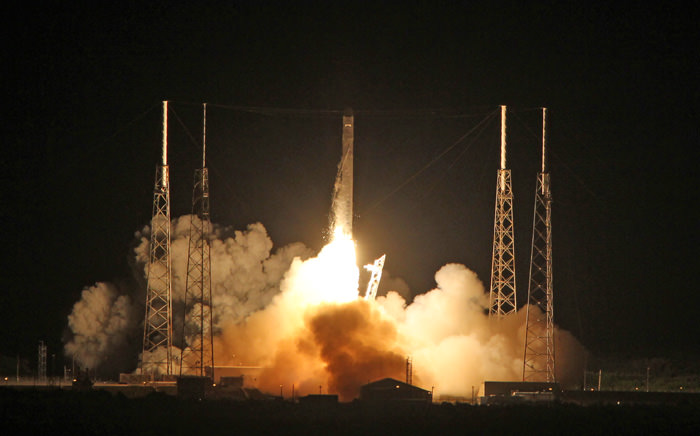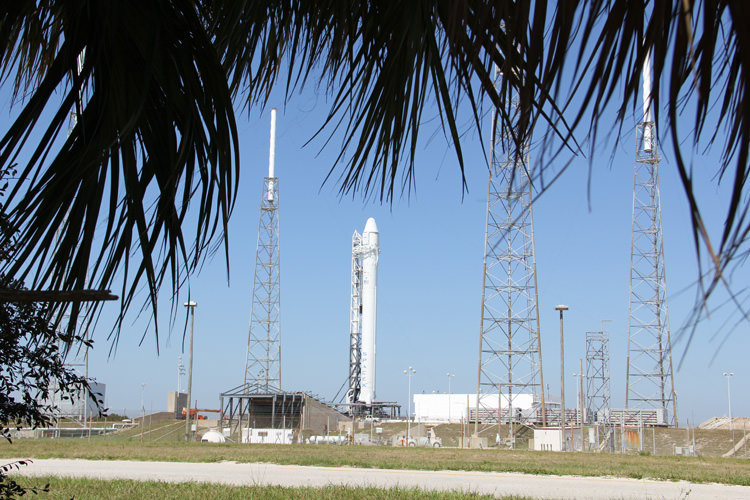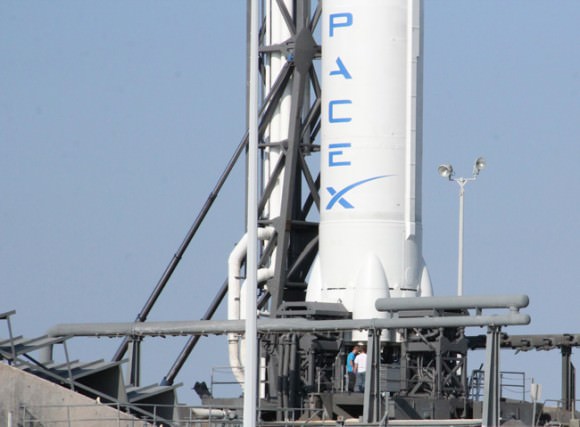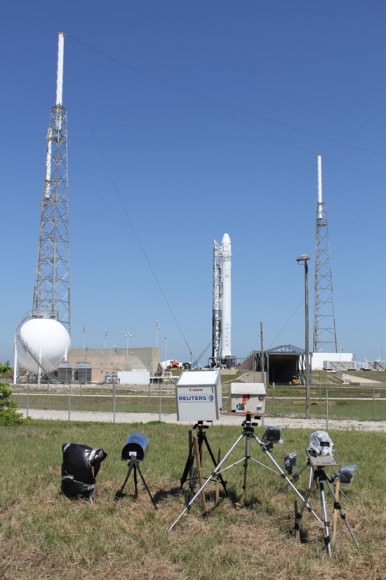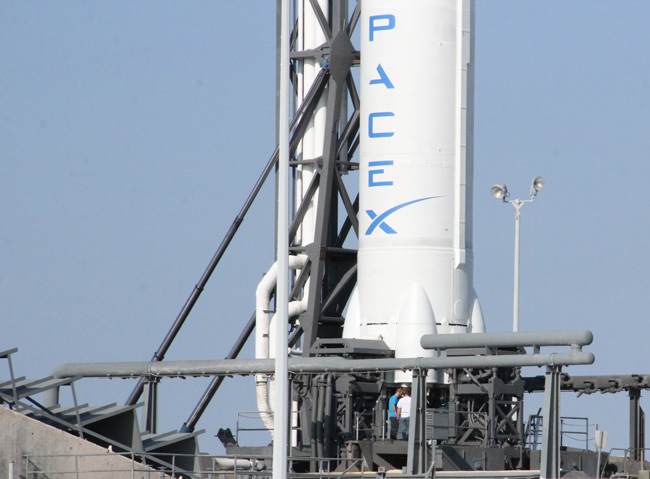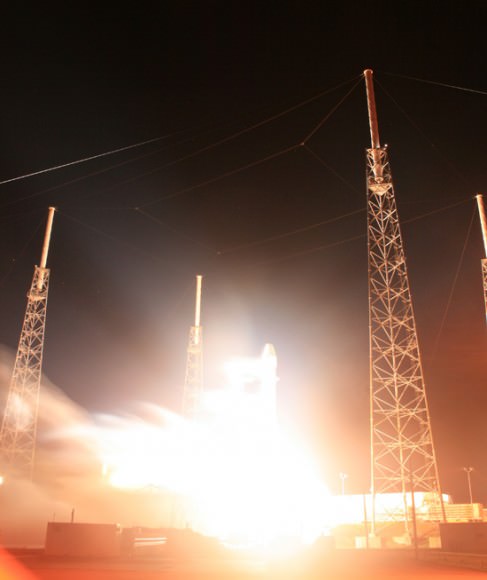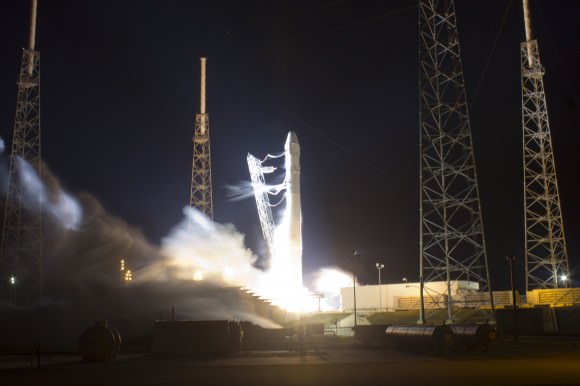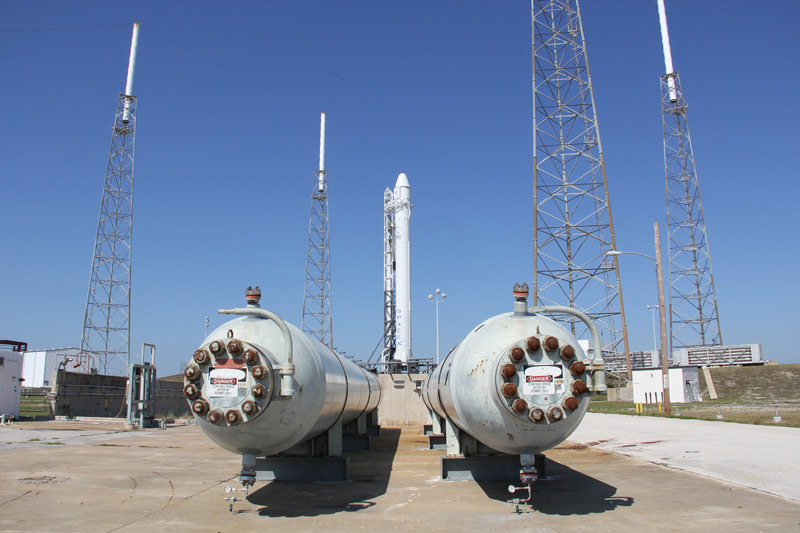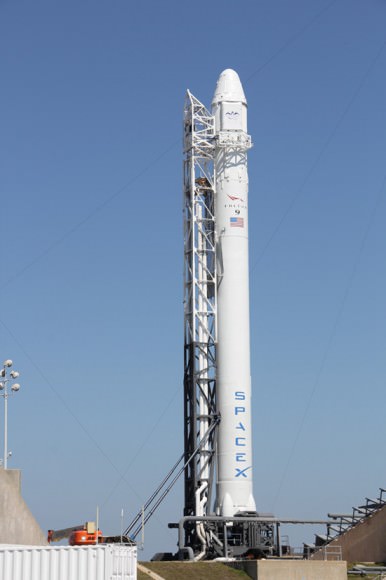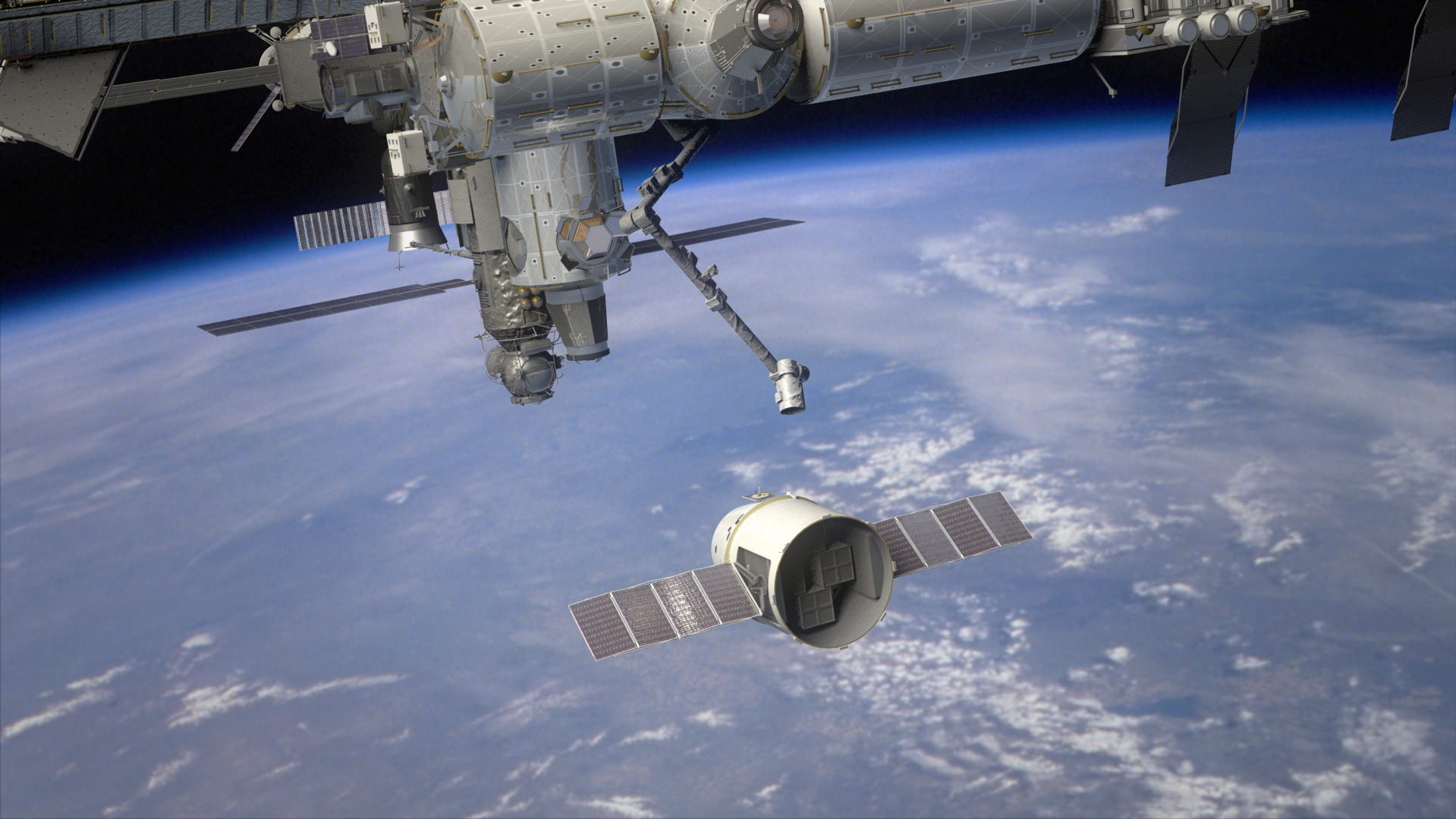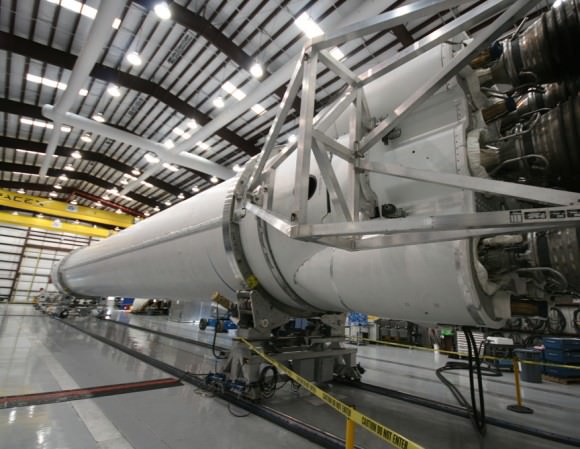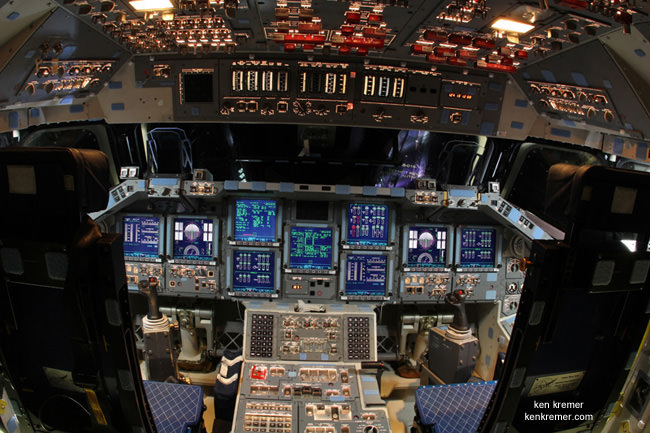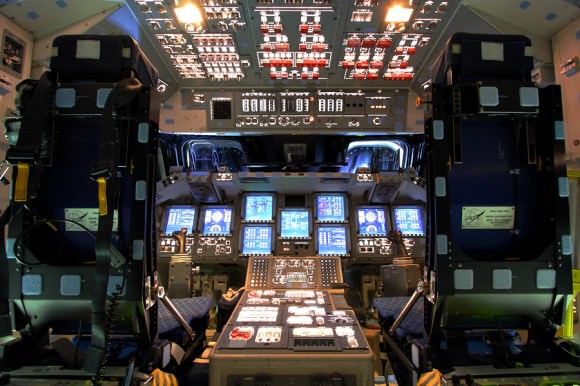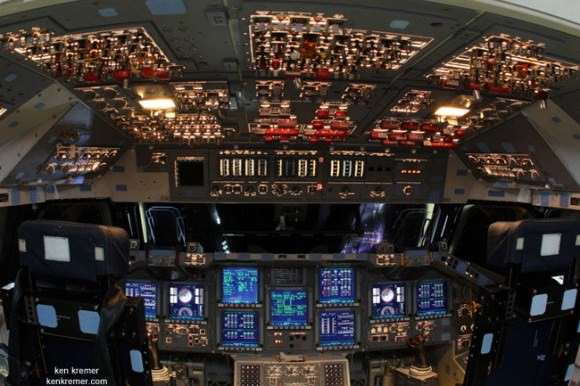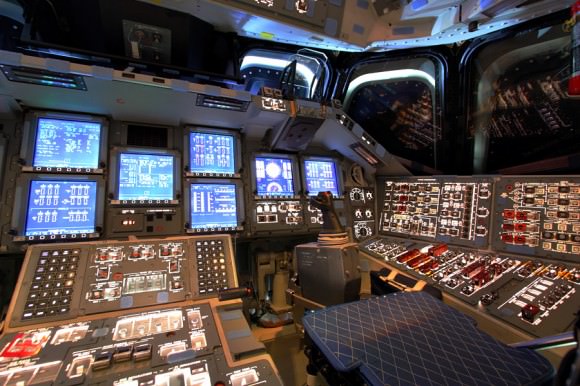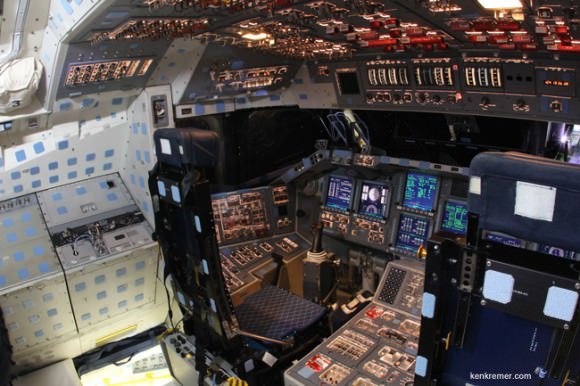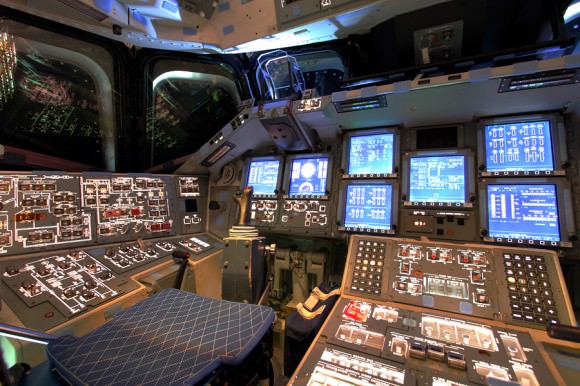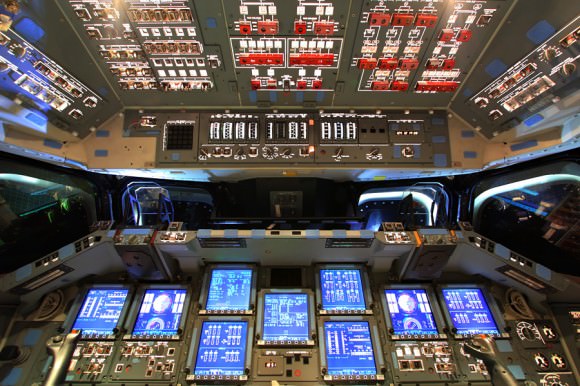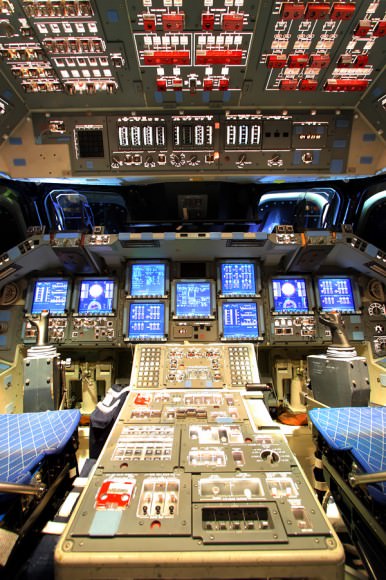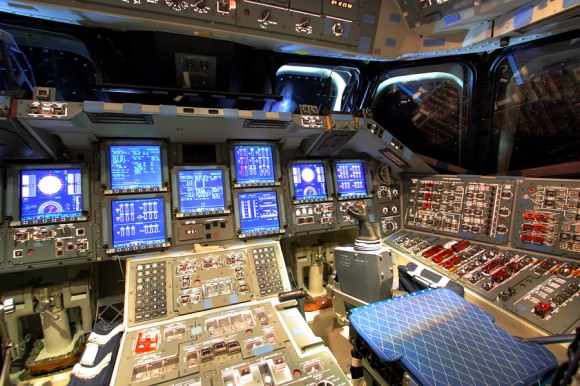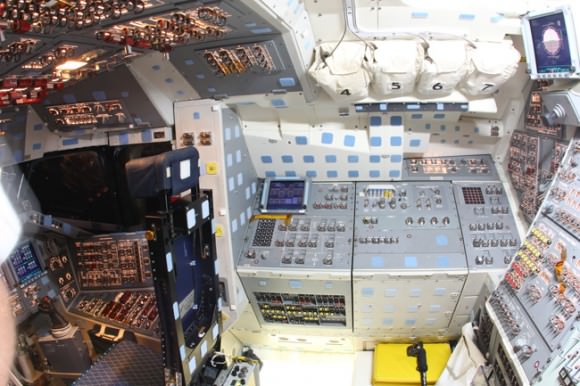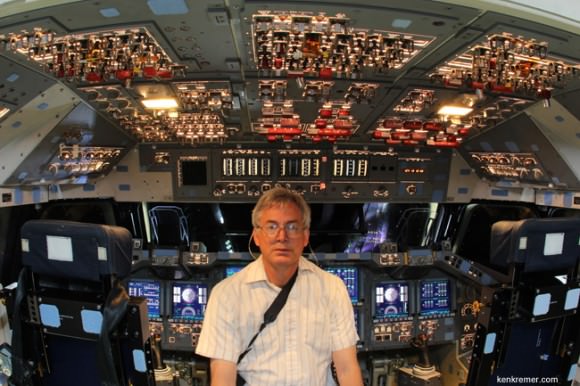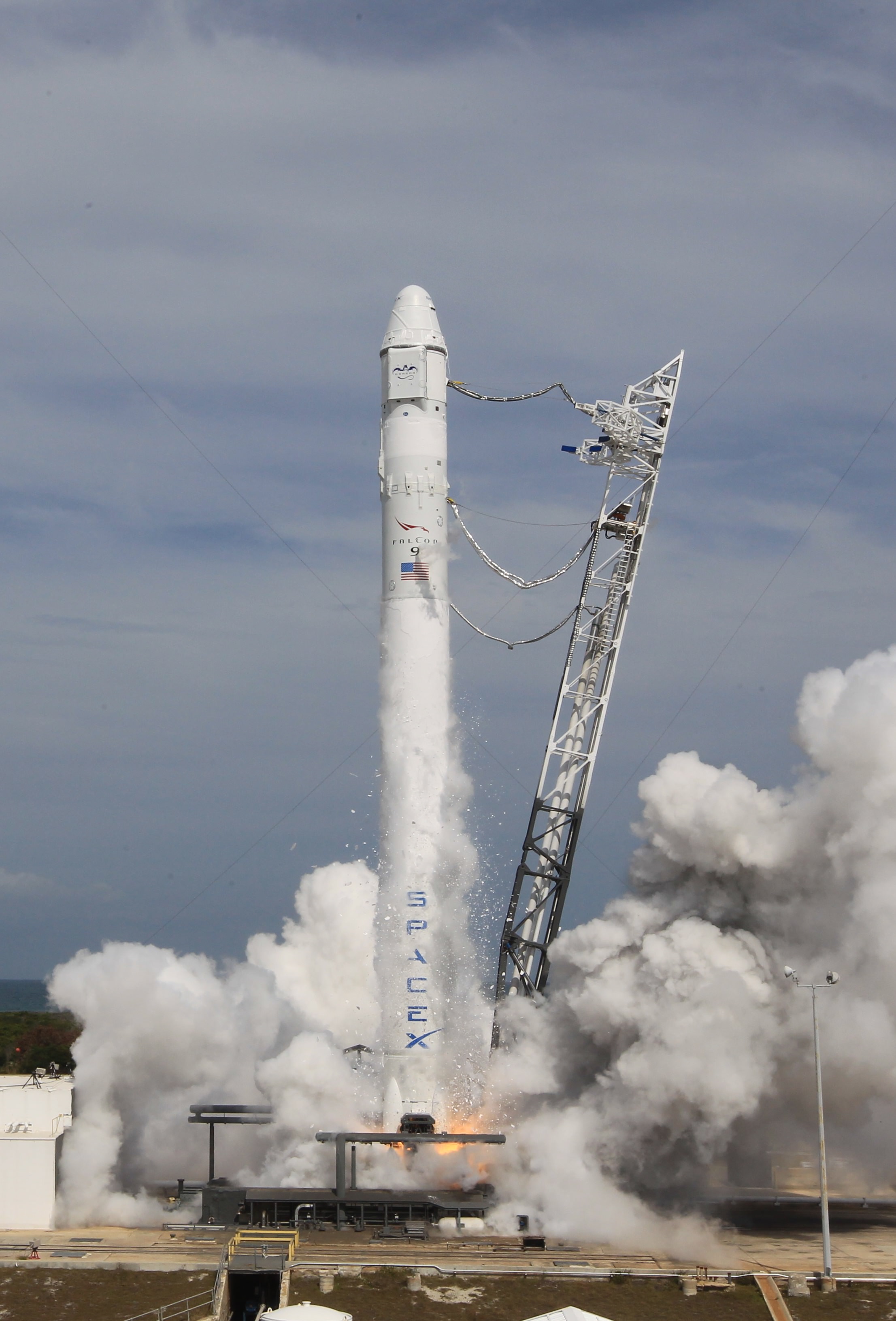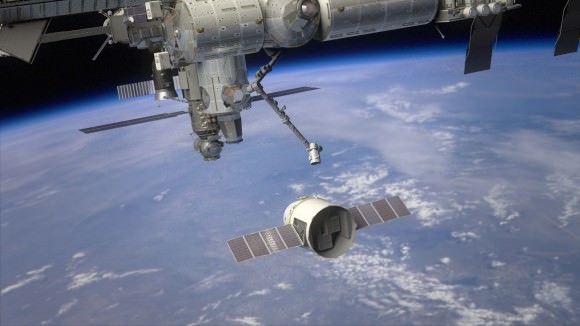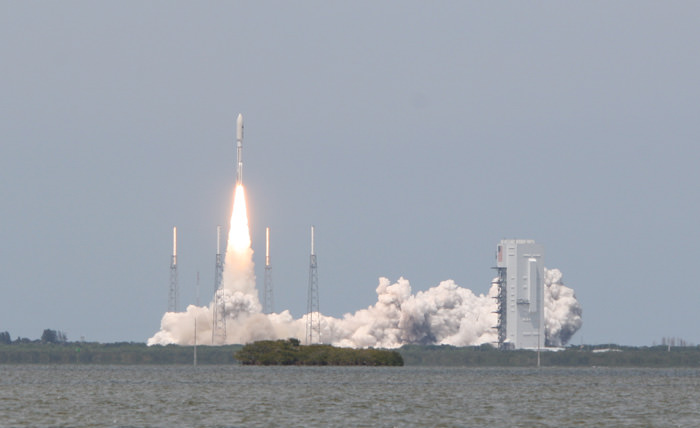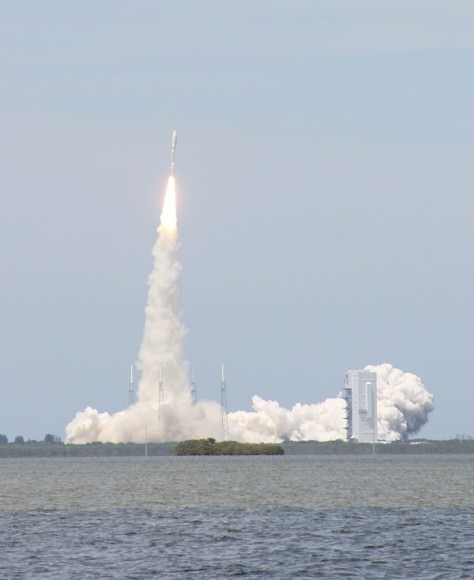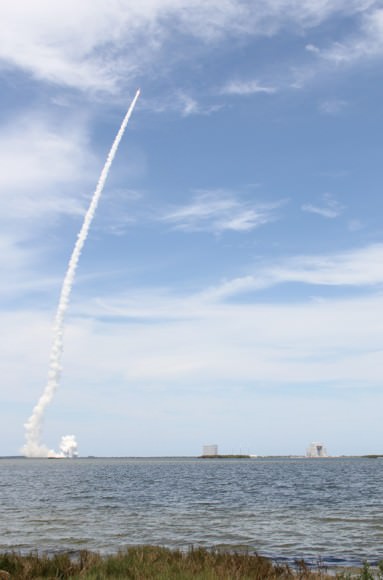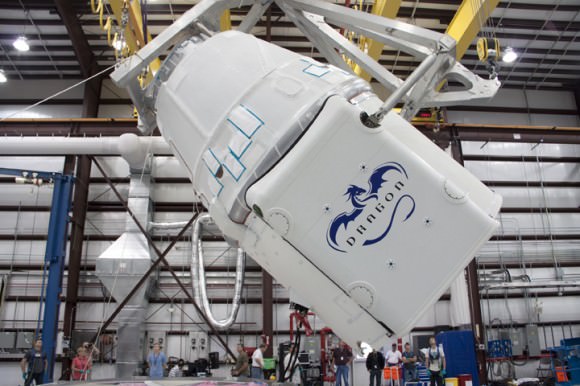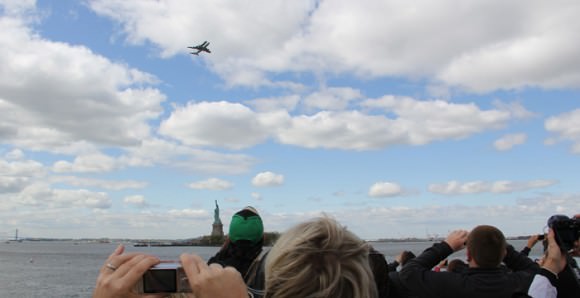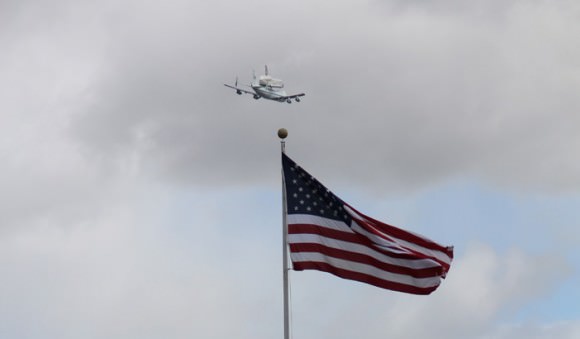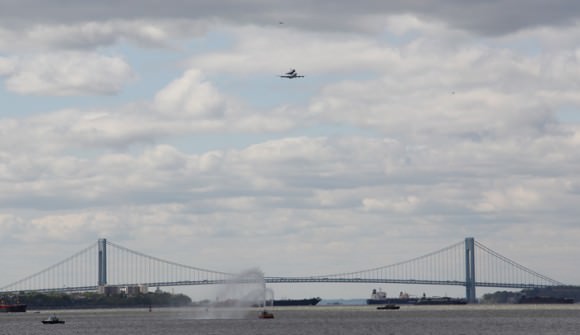[/caption]Following this morning’s (May 22) spectacular nighttime blastoff of the SpaceX Falcon 9 rocket, human exploration of the cosmos embarked on a radical new course that will never be the same again.
The long awaited liftoff of the SpaceX Falcon 9 rocket at 3:44 a.m. lit up the Florida Space Coast for miles around as it roared off Pad 40 at Cape Canaveral, Florida on a history making mission bound for the International Space Station (ISS).
In a split second the page was turned to open a new era in humankinds exploration and exploitation of space that promises adventures to come that will one day be viewed as building a bridge from the dawn of the space age and the first human steps on the moon to starships that will one day ply the shores of interstellar space.
The SpaceX Falcon 9 rocket topped by the Dragon cargo capsule thundered to space from Space Launch Complex-40 at Cape Canaveral Air Force Station at 3:44 am (May 22) and is now safely in orbit with solar arrays deployed and is chasing the ISS flying some 249 miles overhead.
“I congratulate SpaceX for just an absolutely amazing countdown, launch and orbit insertion today, said Bill Gerstenmaier, Associate Administrator for Human Exploration and Operations Mission Directorate at NASA headquarters in Washington. “I’ve had the pleasure of working down here at the Cape with a lot of fantastic teams that have put together a lot of quality rockets and launched a lot of amazing things. I tell you, the SpaceX team, there is none better than this team that has really done a phenomenal job today.”
The on time Falcon 9 blastoff came three days after the first launch attempt was aborted a T Minus 0 when a computer automatically shutdown the already firing engines as it detected a high chamber pressure in one of the nine first stage Merlin 1 C engines.
“Every bit of adrenaline in my body released at that moment,” said Elon Musk to reporters at the post launch media briefing about the moment the rocket lifted off the pad. Musk is the founder, CEO and chief designer of SpaceX. “People were really giving it their all. For us, it was like winning the Super Bowl.”
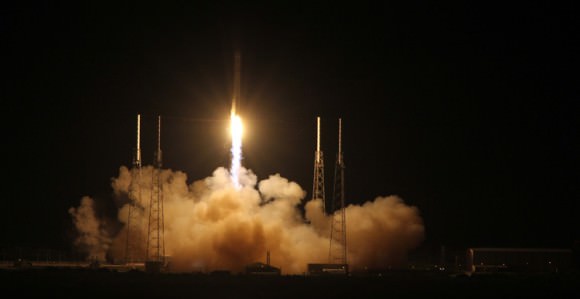
Dragon will be the first private spacecraft that will rendezvous and dock with the ISS. After conducting a complicated series of rendezvous tests and maneuvers, docking is expected on day 4 of the mission on Friday morning EDT, May 26.
“There’s still a thousand things that have to go right, but we are looking forward to this exciting mission,” said Alan Lindenmoyer, manager of NASA’s Commercial Crew and Cargo Program.
Dragon will fly within range of the robotic arm. NASA Astronaut Don Pettit will grapple it and berth the Dragon on the earth facing side of the Harmony module.
NASA TV will provide live docking coverage

